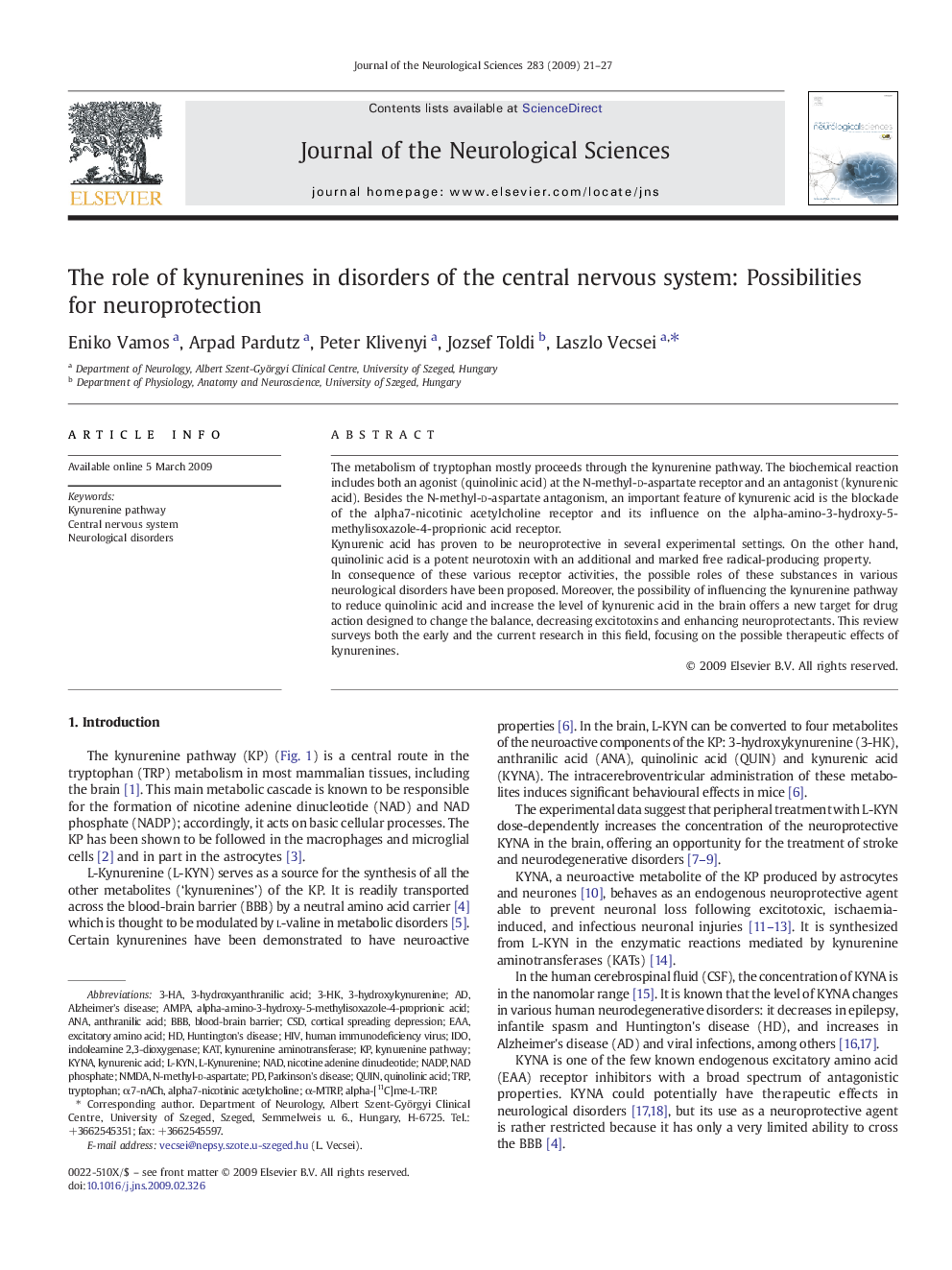| Article ID | Journal | Published Year | Pages | File Type |
|---|---|---|---|---|
| 1915192 | Journal of the Neurological Sciences | 2009 | 7 Pages |
The metabolism of tryptophan mostly proceeds through the kynurenine pathway. The biochemical reaction includes both an agonist (quinolinic acid) at the N-methyl-d-aspartate receptor and an antagonist (kynurenic acid). Besides the N-methyl-d-aspartate antagonism, an important feature of kynurenic acid is the blockade of the alpha7-nicotinic acetylcholine receptor and its influence on the alpha-amino-3-hydroxy-5-methylisoxazole-4-proprionic acid receptor.Kynurenic acid has proven to be neuroprotective in several experimental settings. On the other hand, quinolinic acid is a potent neurotoxin with an additional and marked free radical-producing property.In consequence of these various receptor activities, the possible roles of these substances in various neurological disorders have been proposed. Moreover, the possibility of influencing the kynurenine pathway to reduce quinolinic acid and increase the level of kynurenic acid in the brain offers a new target for drug action designed to change the balance, decreasing excitotoxins and enhancing neuroprotectants. This review surveys both the early and the current research in this field, focusing on the possible therapeutic effects of kynurenines.
